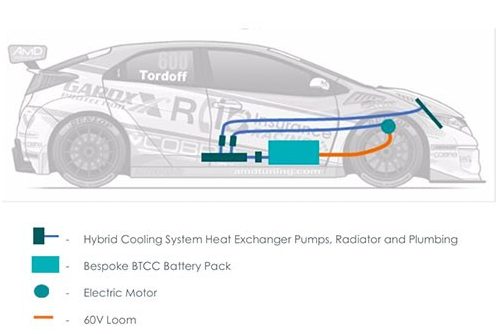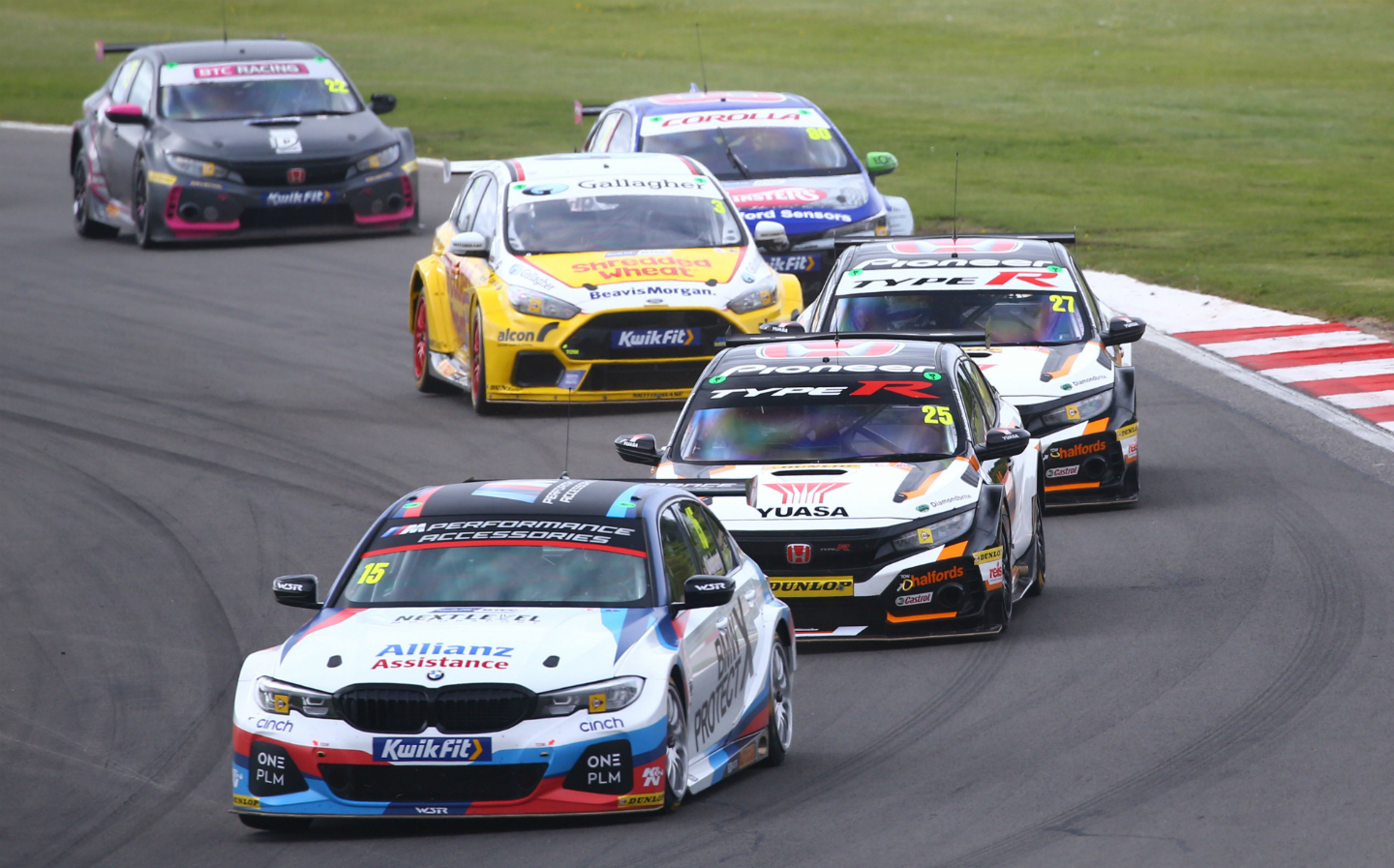British Touring Car Championship reveals hybrid power plans for 2022
Hybrid systems replace success ballast
THE BRITISH Touring Car Championship (BTCC), the UK’s most popular homegrown motor racing series, has outlined its plans to become the first major “tin top” series to adopt hybrid power.
From 2022, BTCC will require teams to supplement their existing 2-litre, 350bhp+ turbocharged petrol engines with an electric motor. The Cosworth-designed 60-volt hybrid system will transfer power via the gearbox.
As in Formula One, the drivers will be given a “push to pass or defend” boost button in the cockpit, offering a hike in power of up to around 40bhp. It will be available for a maximum 15 seconds per lap, although the organisers say the exact details will be defined in testing prior to introduction. When activated, fans will be alerted via an LED display on each car.
Cosworth’s performance simulations suggest a car deploying hybrid power coming out of Copse corner at the Silverstone Circuit would gain up to eight metres on a rival before the next braking zone, according to BTCC.net.
The power boost lasts until the driver presses the hybrid button for a second time, touches the brake pedal or reduces throttle pressure. It will also deactivate under sudden deceleration or acceleration, or when the energy limit is reached.
According to TOCA, the series organiser, drivers will be forbidden from using the boost on the first lap and cars will be required to drive the length of the pit lane on full electric power.
The hybrid systems will be also used to balance performance between the cars, it said, replacing the current weight ballast system. There will be “incremental restrictions” on the amount of hybrid power available to the leading drivers, according to Autosport.
This will “introduce new competitive strategies and opportunities during each BTCC race”, including the adjustment of the level of boost and regeneration in wet conditions.
Recharging of the battery will be via regenerative braking or via a plug, while in the pits. A full recharge takes one hour via a standard 240v three-pin wall socket.

The hybrid racers will be heavier than the base BTCC cars being raced today by the likes of Jason Plato, Matt Neal, Dan Cammish and the defending champion Colin Turkington. With an estimated 64kg worth of extra kit to carry (20kg of which is expected to come from the battery pack), the hybrid BTCC racers are anticipated to tip the scales at around 1,344kg — similar to a conventional family hatchback road car.
However, the hybrid BTCC cars will be 11kg lighter than a current BTCC car carrying the maximum 75kg success ballast.
BTCC chief executive Alan Gow said: “We’ve gathered the best experts together which has resulted in formulating an excellent package. We’ve left no stone unturned in defining the cleverest way for the hybrid system to work, and we have come up with what are some very neat solutions.”
While the BTCC is the first touring car series to commit to hybrids, it isn’t the only form of motor sport interested in electrifying its racers. The World Rally Championship has said it wants its production car-derived rally cars to use hybrid power by 2022, and the World Rallycross Championship will test the zero-emissions racing waters with the launch of a pure-electric “Projekt E” support series in 2020.
Pure electric racing already exists in the form of Formula E, which began in 2014. Its founder Alejandro Agag is due to launch an electric off-road SUV racing series, with a strong focus on environmentalism, in 2021.
Tweet to @J_S_Allen Follow @J_S_Allen
British Touring Car Championship will become hybrid-only by 2022





